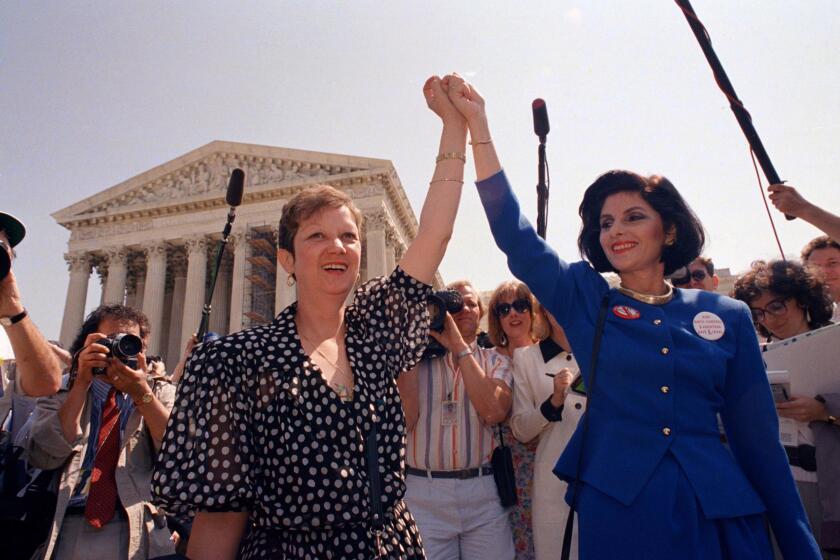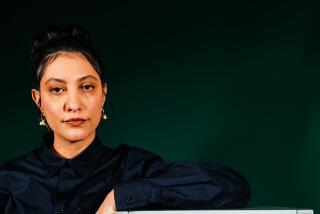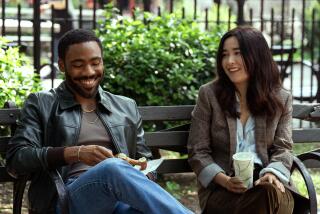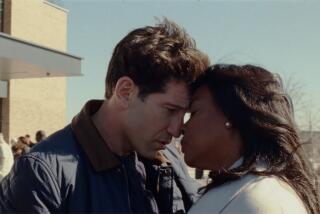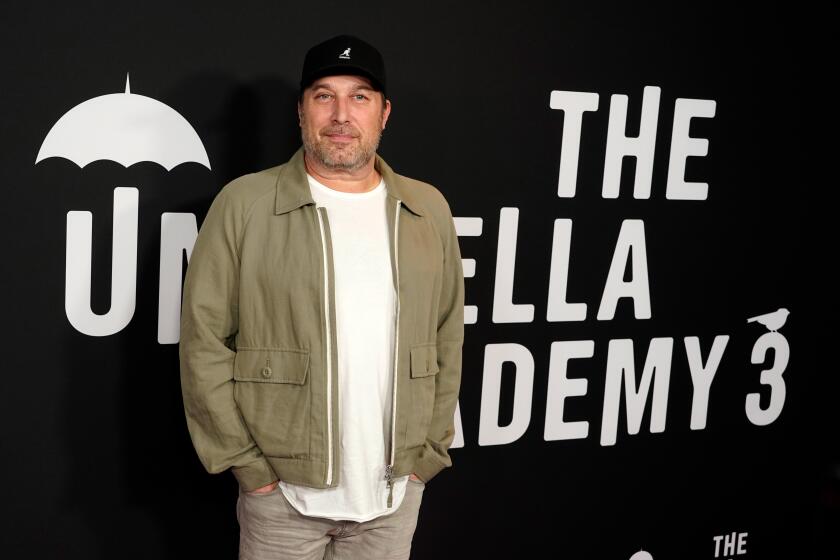How accurate is ‘Mrs. America’s’ portrayal of the National Women’s Conference? We checked.
If you’ve watched any of “Mrs America,” the star-studded miniseries about the battle over the Equal Rights Amendment, you may be wondering how accurately it captures this divisive chapter in American political history.
The nine-part drama pits conservative activist Phyllis Schlafly (Cate Blanchett) and her movement against a formidable band of feminists led by Gloria Steinem (Rose Byrne), Bella Abzug (Margo Martindale), Shirley Chisholm (Uzo Aduba) and Betty Friedan (Tracey Ullman), who are prone to spirited internal debates. Creator Dahvi Waller and her writers conducted extensive research into Second Wave feminism and the rise of the new right in the 1970s.
Like most works of historical fiction, “Mrs. America” takes liberties, particularly when it comes to conversations that took place behind closed doors, offering a speculative take on highly polarizing figures such as Schlafly, whose family and supporters have been critical of the series.
Episode 8 follows anti-ERA housewives Pamela (Kayli Carter) and Alice (Sarah Paulson) as they travel to Houston to take part in the historic National Women’s Conference in 1977 and find themselves changed by the experience. Meanwhile, Phyllis Schlafly organizes a successful conservative counter-rally across town.
Here is a look at fact versus fiction in “Houston.”
“Mrs. America” depicts the battle over the Equal Rights Amendment in the 1970s. We’re fact-checking its historical accuracy, episode by episode.
What was the deal with the National Women’s Conference again?
The National Women’s Conference was held over four days the weekend before Thanksgiving in November 1977. It drew an estimated 20,000 attendees and nearly 2,000 delegates to the Albert Thomas Convention Center in Houston.
The goal of the conference was to draft recommendations on 26 issues related to women — including abortion, child care, employment and rape — and present a national plan of action to President Jimmy Carter and Congress.
The federally funded conference was a major media event that drew celebrities and luminaries including First Ladies Rosalynn Carter, Lady Bird Johnson and Betty Ford. As depicted in the episode, runners carried a torch thousands of miles from Seneca Falls, N.Y., which was the site of the first women’s rights convention in 1848.
Delegates to the conference were selected in a deliberative and messy process at meetings held in 56 states and territories. As depicted in last week’s episode, “Bella,” a number of the meetings devolved into chaotic showdowns between feminists and conservative women.
As the conference approached, organizers were terrified of headlines about “catfights.” Efforts were made to quell internal dissent and to present a unified front to the media. Ultimately, as we see in “Houston,” the delegates voted to support abortion rights, lesbian rights, and federally funded child care, among other recommendations.
Despite the profound significance of the event for many of the participants, it has largely been overlooked in history books. In her memoir, “My Life On The Road,” Steinem describes it as “the most important event nobody knows about,” perhaps because the ERA was ultimately defeated.
Is Alice, Sarah Paulson’s character, based on a real person?
No. Both she and Pamela, a younger woman with a controlling and abusive husband, are composite characters. Series creator Dahvi Waller said that to understand Schlafly’s “appeal to homemakers who were the foot soldiers in her army,” it was essentially to have characters who were housewives. But few of the women who became anti-ERA activists were public figures other than Schlafly and to a lesser extent Rosemary Thomson (Melanie Lynskey) and Lottie Beth Hobbs (Cindy Drummond).
So Waller created these composite fictional characters to represent the conservative women she’d either spoken to or whose writing she’d read in the course of her research. She wanted each of the “antis” to follow a different arc, and by making them fictional, she was able to represent a variety of journeys. “Some of the women were going to stay with Phyllis all the way through, but there must have been one or two who had an epiphany or changed their minds,” she said.
Did conservative women really change their minds or end up supporting any of the resolutions?
Yes and no.
In the closing minutes of “Houston,” Alice and her fellow anti-ERA activists defiantly turn their backs, as if in prayer, during the vote on gay rights — an occurrence that was detailed in the book “Divided We Stand” and captured in this photo.
But in the same dramatic sequence, Pamela and Alice break ranks with fellow conservatives and stand in support of a resolution read by Coretta Scott King on behalf of women of color — an imagined scenario that seems within the realm of possibility, according to accounts of the event.
According to a contemporary news report about the experiences of conservatives at the conference, the proposal calling for an end to “double discrimination” against women of color received “near unanimous support” and “had conservatives embracing fellow delegates” and singing the civil rights anthem “We Shall Overcome.” Steinem — who stayed up most of the night conferring with women-of-color caucuses and drafting the Minority Plank, as seen in the episode — called its adoption of “the high point of the conference.”
Historian Marjorie Spruill exhaustively chronicles the event in in her book, “Divided We Stand: The Battle Over Women’s Rights and Family Values That Polarized American Politics.” She writes that “feminists were pleased to see that, on some occasions, the ‘anti-change’ delegates broke ranks to vote with the majority on several planks including child care, child abuse, credit and employment.” As she documents, conservative women also drafted a minority report that was presented to Congress along with the national plan of action, which indicated that conservatives shared some of the feminists’ concerns — even if their proposed solutions differed dramatically.
But there is not much evidence to support the idea that Alice’s modest political transformation — she ends the episode by lying to Schlafly about an encounter Steinem — was an experience shared by a significant number of conservative women, who accounted for an estimated 20% of the delegates. In “Divided We Stand,” Spruill cites a study which showed that conservative delegates left the conference with a “sharpened sense of their differences” from their feminist opponents and also emerged more united than supporters of the ERA.
Did Betty Friedan come around on gay rights?
Yes. For years, the pioneering feminist was a controversial figure because of her opposition to lesbian rights. As president of NOW, she had described lesbians as a “lavender menace” that threatened the mainstream movement and had long been concerned about the conflation of lesbianism and feminism. But in a move that was celebrated as a critical show of unity in Houston, Friedan surprisingly came out in favor of a controversial plank supporting equal rights for lesbians. As the TV cameras rolled, Friedan spoke movingly of her evolution: “I have been known to be violently opposed to lesbianism. And, in fact, I have been. As someone who grew up in Illinois, in Peoria, Illinois, as someone who has loved men — perhaps too well — I’ve had trouble with this issue. But we must help women who are lesbians in their own civil rights.”
Did Rosemary Thomson deliver a dramatic floor speech opposing abortion?
No, but a woman named Ann O’Donnell, head of the Missouri delegation at the conference, did during the debate over the reproductive rights plank. “It is the antithesis of the feminist women’s movement to oppress the less powerful,” she said, according to “Divided We Stand.” As for the image evoked by Thomson of a rose representing an unborn baby, that appears to have been borrowed from Nellie Gray, a speaker at the Pro-Family, Pro-Life counter rally organized by Schlafly and Hobbs.
Was the conference overbooked?
Yes, massively.
After a long journey from Illinois, Pamela and Alice arrive at their hotel, only to find it overbooked — an experience that would have been shared by many of the conference attendees. Hotel managers in Houston had expected more cancellations and “women stood all day in lines winding throughout the lobbies,” Spruill writes in “Divided We Stand.” The main hotel, the Hyatt Regency, was even dubbed the “Riot Hegency.” Rumors swirled that conservatives had sabotaged the conference, but they proved to be unfounded.
Was the conference as groovy as depicted?
Sounds like it.
During her long night of the soul, an inebriated Alice wanders around the convention center, checking out various performances, lectures and film screenings. This aligns with Spruill’s depiction of the event, which included “pageantry, films, exhibits, self-defense workshops, women’s history lessons, poetry readings, stand-up comedy, a Sweet Honey in the Rock concert,” along with “occasional spontaneous outbursts of hugging, singing and dancing in the aisles.” The large exhibit area was outfitted with beanbags and shag carpet — it was 1977, after all — included more than 200 booths and offered a range of workshops and entertainment.
Norma McCorvey, also known as ‘Jane Roe,’ says she was paid to be an antiabortion activist in a new documentary filmed before her death.
What about Schlafly’s counter-rally? Were there really a bunch of racists there?
The conservative counter-rally is only briefly depicted in “Houston,” but in some ways it proved to be as pivotal as the National Women’s Conference. The Pro-Life, Pro-Family Rally, as it was known, was largely organized by Hobbs — Schlafly initially opposed it — and was held at the Astro Arena, which had a capacity of 12,000. The attendees were overwhelmingly white, and many were men. Resolutions passed opposing the ERA, abortion, gay rights and federally funded child care. Speakers included Schlafly, Hobbs and Dr. Mildred Jefferson, a black doctor and anti-abortion activist.
As Spruill documents in “Divided We Stand,” Dianne Edmondson — an Oklahoman who created “mix tapes” designed to spur conservative women to action against the ERA — compiled another cassette that proved even more popular than the original and urged churches to charter buses to send to the rally. It worked: Some participants traveled 12 hours or more to the rally, then immediately boarded buses back home because the hotels in Houston were booked.
The success of the rally helped social conservatives realize their political power and led to an increase in activism after Houston, said Spruill, who sees the weekend in Houston as a crucial turning point.
She argues that the alliances formed at the counter-rally between formerly single-issue voters from disparate religious groups would come to define American politics for decades, uniting opponents of abortion, the ERA and gay rights under a single “pro-family” movement that became increasingly influential in Republican politics. Meanwhile, Democrats consolidated around abortion, feminism and gay rights.
“The issues that polarized American women during the ‘70s basically have polarized the whole nation,” Spruill said in an interview.
In the episode’s closing sequence, Schlafly is heading into the arena as a confederate flag waves behind her — the implication being the event drew support from racists and white supremacists. (In “Bella,” there’s also discussion of the Klan’s involvement in the state meetings.)
And according to Spruill’s research, there were avowed racists among the conservatives who traveled to Houston.
Anti-feminists had seized control of the Mississippi delegation, which was all white and included men. A state delegate named Dallas Higgins was married to the Grand Dragon of the Ku Klux Klan and admitted to attending meetings herself. An Alabama Klan member said he and his associates planned to go to Houston to protect “their women” from lesbians. Writer Andrea Dworkin, who interviewed conservative delegates, said she was viewed with suspicion because she was Jewish. Outside the convention center, a street brawl broke out when a member of a white supremacist group called the Christian Defense League punched a woman.
But Schlafly and Hobbs were also acutely sensitive to being portrayed as racist and made at least some effort to curtail obvious signs of intolerance at their own event, barring the Christian Defense League from handing out materials. “White racists were clearly part of their constituency,” Spruill argues in “Divided We Stand,” “but this was not something they wanted on display at the rally.”
More to Read
The complete guide to home viewing
Get Screen Gab for everything about the TV shows and streaming movies everyone’s talking about.
You may occasionally receive promotional content from the Los Angeles Times.
